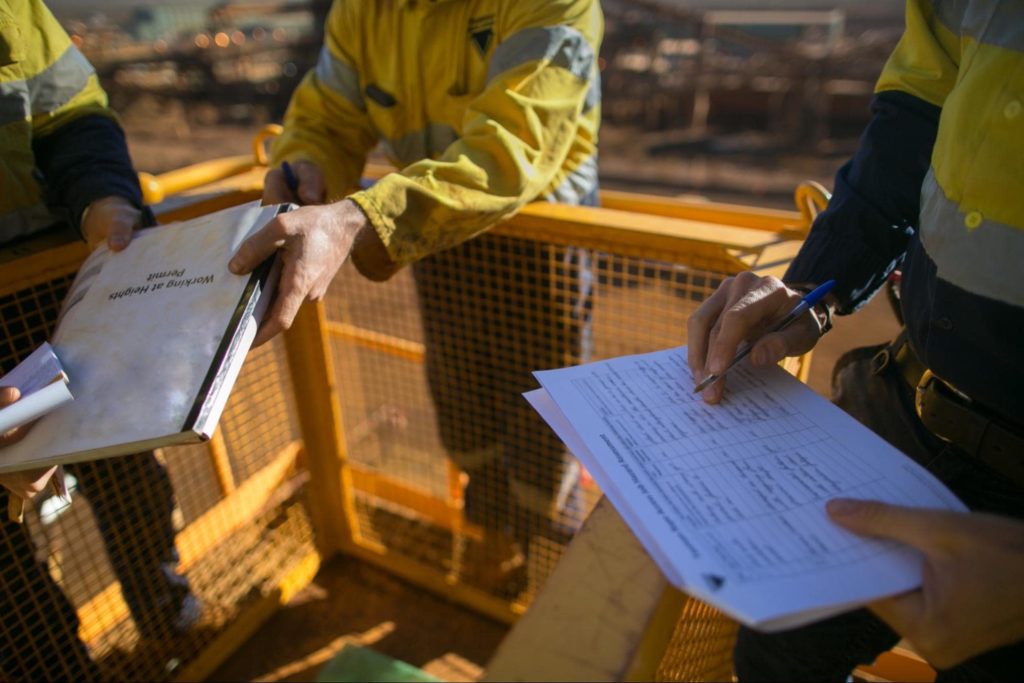
According to the American Staffing Association, there are approximately 17 million temporary workers in the United States. Because they make up a large portion of the workforce (around 30-40%), protecting the health and safety of temporary workers is becoming a pertinent issue. In this blog, we’ll explore how to keep temporary workers safe on the job, what to know about insurance, and how your business can function above-board along the way.
Are Temporary Workers on the Rise?
Temporary employment has been steadily on the rise for the past decade. From 2012-2019, nearly 480,000 part-time or temporary jobs were added to the U.S. workforce. According to several studies, the growth can be attributed to (1) people looking to earn extra income, and (2) a workforce looking to spend less time at work and have more control over their hours.
Some of the occupations experiencing the fastest growth in temporary employment include:
- Laborers and material movers
- Production workers
- Packers and packagers
- Industrial truck & tractor operations
- Human resources specialists
A study by TrueBlue and Emsi projects reveals that temporary help services employment will grow to more than 3.2 million jobs by 2025, an increase of nearly 254,000 jobs (8.5%) from 2019.
The Difference Between Temporary and Part-Time Workers
Though sometimes confused with one another, there is a difference between temporary and part-time work. Temp jobs – which are just that, temporary – generally function for a predetermined amount of time and exist to help a company out in a time of need. Part-time employment usually falls under anything less than 30 hours a week and can continue indefinitely.

The Importance of Temporary Worker Safety
A lot of jobs that fall under the temporary category can also be categorized as dangerous. With this in mind, it’s important for businesses to understand how to prioritize the health and safety of temporary workers.
The Occupational Safety and Health Administration (OSHA) has found that temporary workers are at a greater risk of workplace illness and injury than permanent employees. A number of factors contribute to this higher rate of injuries and illnesses among temporary workers, including:
- Insufficient training for the hazards of the job
- Quick turnover among temporary workers
- Decreased access to safety equipment
- Inferior working conditions in some situations
- Fear of reporting unsafe working conditions and hazards due to perceived job instability
By law, employers and staffing agencies are equally responsible for the health and safety of temporary workers. You can learn more about OSHA’s temporary worker initiative here.
Is an Employer Legally Responsible for a Temporary Worker?
Yes. In matters of health and safety, a business must train temporary workers in the same manner and to the same extent they train their full-time staff. It’s important to understand the employment rights of temporary staff. No company should cut corners when it comes to ensuring OSHA’s training, hazard communication, and record-keeping requirements are fulfilled.
Though many businesses are not required to offer benefits (like health insurance) to temporary workers, failing to ensure your temporary employees are covered by workers’ compensation insurance could result in costly legal fees if an accident were to occur. Typically, a staffing agency will provide insurance for the temporary worker, but it’s important to understand how that agency classifies them (i.e., a W2 employee or a 1099 worker).
While your commercial general liability policy will protect you if a customer or visitor to your workplace is injured on-site, it won’t protect your employees or temporary workers, as they need to be covered under your worker’s compensation policy (if not already covered by the staffing agency’s policy.)

How to Protect Temporary Workers in 6 Easy Steps
In addition to insurance coverage, protecting the health and safety of temporary workers begins with understanding the factors affecting health and safety at a workplace. A strong safety culture – one that’s comfortable sharing questions and concerns – helps ensure that a high level of safety standards are set in place and kept. It also helps full-time, part-time, and temporary employees understand safety policies while feeling safe and equipped to complete their job.
We’ll explore some tangible ways to create a temporary employee safety checklist and implement a safety culture below.
1. Identify Hazards
It’s important for employers and staffing agencies to familiarize themselves with workplace safety hazards. Being able to identify the hazards of a work-site can give the staffing agency a better idea of who to fill your open positions with.
2. Evaluate the Worksite
A walk-through can help the employer and the staffing agency identify and potentially remove any injury-leading hazards found on the worksite. If a hazard cannot be removed, the hazard should be mitigated through proper procedures and adequate job training.
Staffing agencies and employers should work together to complete this safety analysis because it ensures that working conditions for temporary workers are reasonable and safe.
3. Create a Clear Contract
The contract between the staffing agency and the employer should clearly state who is held responsible for the health and safety of temporary workers. The contract should clearly state whether the host employer or agency is responsible for insuring the temporary worker.
4. Establish an Injury and Illness Prevention Program
Prevention programs are designed to reduce the severity and frequency of workplace injuries and illnesses. These programs are helpful for employers to address new hazards, as any time a temporary worker is hired, there could be changes in procedures or new job tasks and functions.
5. Conduct Proper Safety Training
Both the employer and the staffing agency are responsible for adequately training a temporary worker. It’s the employer’s duty to provide in-depth training catered to the specific job requirements, while the staffing agencies should provide general safety training for the temporary worker.
6. Communicate with Your Temporary Workers
Employers should train temporary workers on how to report unsafe conditions or a company’s failure to adhere to any current safety procedures. Staffing agencies should follow up with the employer if any safety concerns have been brought to them by the temporary worker.

Risk Management and Safety Culture
Another step in protecting the health and safety of temporary workers is to conduct a formal risk analysis to enhance your company’s safety culture. A safety culture is a set of shared beliefs, attitudes, and practices that determine a business’s outlook and plan of action to protect both workers and customers.
Whether good or bad, every organization has a safety culture. Performing a risk assessment can help ensure you protect the health and safety of temporary workers as they acclimate to a new environment and new protocols.
Risk assessments are there to build awareness around the importance of safety. Throughout the process, you may find your company is lacking a stop work safety policy or other relevant procedures. If so, it’s always better late than never to implement policies that can protect your workers, customers, and business in the long run.
Temporary Worker FAQs
Since the world of temporary employment and contract workers can be complicated and ever-evolving, here are some of the common FAQs we hear.
Do You Need Health Insurance for Seasonal Employees?
Understanding a temporary employee’s seasonal and holiday rights can be tricky. The ACA and seasonal employees can be a difficult road to navigate to remain compliant. The ACA requires applicable large employers (ALEs) to offer health insurance to their full-time (30-plus hours per week) employees. Your organization is an ALE if you have 50 or more full-time equivalent (FTE) employees.
But there’s an exception for a seasonal workforce. If your workforce includes 50 or more FTE workers for less than 120 days per year (or four full calendar months, regardless of whether they’re consecutive), and the workers in excess of 50 during that time period are seasonal workers, your organization is not considered an ALE and therefore are not subject to the ACA’s employer mandate.
What Is a Temporary Employee’s Maternity Rights?
If a temporary worker takes Family and Medical Leave Act (FMLA) leave through a staffing agency, it may be in your best interests to accept the temporary worker back for the position they had before leaving.
Since the legality surrounding this issue isn’t set in stone, you should consult with professionals on this matter. For more, learn about the Pregnancy Discrimination Act (PDA) instituted by the U.S. Equal Employment Opportunity Commission.
Can I Pay Unemployment Insurance for a Contract Employee?
Unemployment benefits are reserved for workers whose employers pay state and federal unemployment taxes to contribute to the unemployment system. Typically, an independent contractor can’t collect unemployment when out of work since neither independent contractors, nor their clients or customers, pay state or federal unemployment taxes.
Contract Employees and Personal Health Insurance: Who is Responsible?
An employer may — though they aren’t legally responsible to — offer health insurance to a 1099 employee. A “1099” status usually refers to workers that are self-employed or functioning as independent contractors.Understanding the ins and outs of risk management and insurance policies can be difficult.